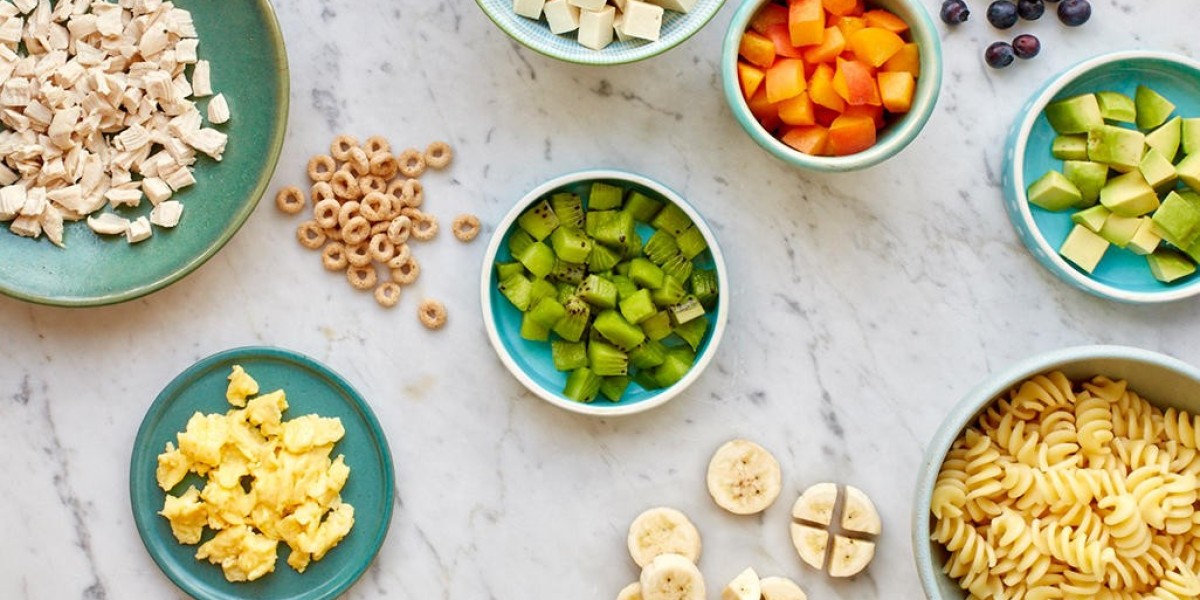Bringing your baby’s meals to life in your own kitchen is one of the most rewarding parts of parenting. You get to choose every ingredient, control the freshness, and ensure each bite is packed with nutrients that support your little one’s growth. Whether you’re new to weaning or already exploring different textures and tastes, creating nutritious baby meals at home can be simple, fun, and full of flavour.
With a little planning and the right approach, you can make wholesome food that keeps your baby energised, curious, and happy during mealtimes. Let’s explore how to do it step by step.
Understanding Your Baby’s Nutritional Needs
Before diving into meal prep, it’s important to understand what your baby needs nutritionally. Babies grow rapidly in their first year, and their bodies require a mix of macronutrients and micronutrients to support development.
Here’s a quick breakdown:
Iron: Vital for brain development and preventing anaemia. Found in lentils, chicken, eggs, and fortified cereals.
Healthy fats: Essential for energy and brain health. Sources include avocado, olive oil, smooth nut butters, and oily fish like salmon.
Protein: Supports muscle and tissue growth. Offer soft-cooked meats, beans, or tofu.
Calcium: Strengthens bones and teeth. Include full-fat yoghurt, cheese, or milk.
Vitamins: A rainbow of fruit and vegetables ensures your baby gets vitamins A, C, and D naturally.
When creating meals, aim for balance rather than perfection. A variety of colours on the plate usually means a mix of nutrients too!
Planning Balanced Baby Meals at Home
Making baby meals from scratch doesn’t have to be time-consuming. Batch cooking and meal planning can make things easier. Here’s a helpful structure to keep in mind:
Breakfast: Energy-rich foods like porridge with mashed banana, or yoghurt with pureed fruit.
Lunch: Light meals such as soft-cooked pasta with vegetables, mashed lentils, or scrambled eggs.
Dinner: Wholesome dishes like vegetable risotto, cottage pie, or chicken with mashed sweet potato.
For babies around 10 months old, texture exploration becomes especially important. At this stage, you can introduce small, soft chunks and finger foods. For inspiration, check out these delicious and easy recipes for 10 months, which include flavour-packed ideas perfect for this age.
How to Introduce Variety and Flavour
Babies learn to enjoy a wide range of flavours early on. The more tastes they’re exposed to, the less likely they are to become fussy eaters later. Here are a few tips for adding variety:
Rotate ingredients regularly: Don’t stick to the same few fruits or vegetables. Try different grains like quinoa, couscous, or brown rice.
Use herbs and mild spices: A tiny pinch of cinnamon, cumin, or basil can make baby meals exciting without needing salt or sugar.
Mix textures: Offer a mix of mashed, chopped, and soft finger foods to encourage independence and motor skill development.
Combine flavours: Blend sweet and savoury, for instance, sweet potato with peas or apple with chicken to expand their palate.
If you’re just starting to experiment with recipes for slightly younger babies, these quick and tasty recipes for 7 months can guide you on introducing new tastes safely and deliciously.
Making Meal Prep Easier
Between nappy changes, playtime, and naps, finding time to cook might feel daunting. But preparing baby meals doesn’t have to take hours. Here’s how to simplify it:
Batch cooking: Cook in large quantities and freeze small portions in ice cube trays or baby-safe containers.
Steam instead of boil: Steaming preserves nutrients better and keeps veggies soft and vibrant.
Blend or mash smartly: Invest in a handheld blender for quick purees or mash with a fork for chunkier textures.
Plan shopping lists: Focus on seasonal produce, it’s fresher, tastier, and often cheaper.
Reuse ingredients: Cook versatile bases like sweet potatoes or lentils that can be used again for different meals.
Once you get into a rhythm, you’ll find that home cooking saves time and money while giving you peace of mind about what goes into your baby’s food.
Creating a Positive Mealtime Environment
How you serve food is just as important as what you serve. Mealtime should feel calm and enjoyable. Babies sense stress easily, and a relaxed atmosphere encourages better eating habits.
Eat together: Babies love copying parents, so share meals as a family whenever possible.
Let them explore: Expect a bit of mess! Touching and squishing food helps babies get familiar with new textures.
Avoid distractions: Keep toys and screens away during meals to help your baby focus on eating.
Stay patient: Appetite fluctuates daily some days a baby may eat a lot, and on others, very little. That’s perfectly normal.
Positive mealtime experiences build the foundation for healthy eating habits that last a lifetime.
Practical Tips for a Nutritious Routine
Hydration: Offer water regularly, especially alongside meals.
Avoid processed foods: Babies don’t need added sugars, salt, or artificial flavourings.
Trust your baby’s cues: Stop feeding when they turn away or show signs of fullness.
Keep mealtimes consistent: Routines help regulate hunger and create predictability.
Nourishing Little Ones the Natural Way with Piccolo
Creating nutritious meals at home is one of the most meaningful ways to care for your baby. From introducing colourful fruits to experimenting with soft textures, every spoonful helps build their confidence and taste preferences.
If you’re looking for wholesome baby recipes, meal plans, and expert weaning advice tailored to every stage, visit Piccolo, your partner in making healthy eating simple, joyful, and full of natural goodness.








